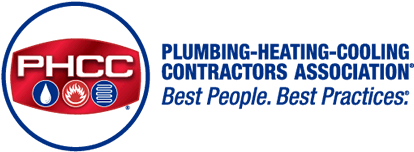
By Janet B. Bray, Chief Strategist and Founder, Bray Strategies
The Workforce Innovation and Opportunity Act, or WIOA, provides for comprehensive realignment of the nation’s workforce development programs. The federal government provides significant funding to states for workforce programs covered by WIOA.
The goal of WIOA is to ensure that federally-funded state employment and training programs provide job seekers the skill sets needed by businesses and to ensure that employment programs effectively link job seekers to employers.
States are required to comply with the strategic planning and operating guidelines under WIOA or risk losing funding for the Core programs. WIOA provides the guidelines, strategies and incentives to improve future program performance to meet program objectives.
For program year 2016 the federal government appropriated more than $6.9 billion to states for the Core WIOA Program and approximately $3.4 billion in federal formula funding for partner programs, for total funding of $10.5 billion. Federal funding is also provided through competitive grants.
Funding for Core WIOA Programs
WIOA requires that workforce training and employment programs be coordinated to ensure that the programs work in tandem, providing consistent services to job seekers and employers. WIOA requires states to coordinate six core programs:
- U.S. Department of Labor (USDOL) Adult Services
- USDOL Dislocated Workers
- USDOL Youth Services
- Wagner-Peyser program
- U.S. Department of Education’s (USED) Division of Adult Education and Literacy
- USED rehabilitation services program.
For example, job seekers who request assistance finding a job under the Wegner-Peyser program, but lack basic skills, can access services of the Adult Education and Literacy programs at the same physical location. Employers can identify specific types of labor skills needed, and the Adult Services staff can provide training on those specific skills to job seekers. The state WIOA funding allotments are based on a formula outlined in WIOA. They are very similar, with only slight differences related to the target population.
Workforce Development System Fast Facts
- Nearly 550 local WIBs nationwide
- Nearly 2,500 one-stop centers
- Approximately 20 million Americans are served every year
- 12,000 to 13,000 employers and employer representatives serve on WIBs
- 8 million people in the system – available to hire or train
- 10% to 20% of adults served receive training
- Training vouchers called Individual Training Accounts cover up to $2,000 to $8,000 per person
What is a Workforce Development Board?
- There are two types of workforce development boards, or WDBs: state boards and local boards
- The state WDB, appointed by the governor, makes state workforce policy and ensures local compliance with federal mandates
- A local WDB makes workforce policy for its region and oversees local one-stop centers that provide training and employment services
- Board members represent employers, unions, community-based service providers, educational institutions and government economic development agencies
- Local WDB decisions include who should get priority for service, amount of money available for training and what schools or other entities are qualified to receive funds for training
- Chairman and 51% of members must come from the private sector
- Local boards streamlined by WIOA from WIA – from 51 members to 19 members
New Emphasis on Apprenticeship Program
A core goal of WIOA is to spur the growth of apprenticeship by providing for the following:
- Only federal and state-approved “registered apprenticeships” qualify for reserved spots and other preferences
- Each state workforce board must include a representative of an apprenticeship program
- 20% of the seats on local WDBs are reserved for union officials and representatives of apprenticeship programs
- Apprenticeship programs automatically qualify as eligible training providers and can receive ITA vouchers to train workers
- 20% of youth training funds are reserved for programs that provide work experience, including pre-apprenticeship
- Apprenticeship completion certificates are recognized as post-secondary credentials
BOTTOM LINE: companies and associations that run registered apprenticeship programs are likely to have a strong competitive edge in applying for WIOA funding and influencing state and local workforce policy.
Eligible Training Provider
WIOA requires states to maintain a list of training providers approved to provide training to individuals eligible to receive WIOA funds. The law calls this list the Eligible Training Provider List (ETPL). The providers on the ETPL are occupational skills training programs authorized to receive WIOA funding through Individual Training Accounts (ITAs).
It also enables American Job Centers (AJC) Workforce Specialists to assist customers in selecting training programs that will help prepare them to obtain a job by learning skills that are required by local employers in a high-demand field.
Eligible Training Providers generally come from one of the following sources:
- Registered Apprenticeship
- Community College
- Public university
- Private for-profit and nonprofit institutions
- Community Based Organizations
- Private Career Schools
States are responsible for ensuring the quality and value of eligible training programs on the ETPL, as well as measuring performance information about each program. Standards generally outlined by states include:
- Providing comprehensive support services to participants
- Connecting participants to careers
- Using LMI and aligning to the labor market
- Connecting and leveraging resources
- Conducting real-time evaluation for continuous improvement
The inclusion of a training provider on the ETPL, and designation as approved for ITA funding, does not guarantee funds, nor is it a requirement that the Workforce Investment Council (WIC) or an AJC make any referrals to the provider. Moreover, the selection of an appropriate training provider is a mutual decision made by the AJC Workforce Specialist and the prospective participant.
Sponsors of Federal Registered Apprenticeship Programs are automatically place on the ETPL in those states that align with and support the RA program.
